https://ph.trip.com/moments/destination-page-33407/
2025 Page Travel Guide: Must-see attractions, popular food, hotels, transportation routes (updated in July)
Page Today's weather
Mostly clear 20-28℃
All Trip Moments about Page
Winter break with friends in the US: Enjoy a different journey
Winter break is here! Take your friends on a trip to the US! Explore Yellowstone National Park in depth, visit four national parks with ease, and enjoy the beautiful scenery with a reasonable itinerary that is not too adventurous, even for seniors! -------------------- The US is located in the heart of North America 🗺️ and has a diverse historical background 📜. From the bustling Times Square in New York 🏙️ to the Golden Gate Bridge in San Francisco 🌉, it is known as the land of freedom. -------------------- 🚗 Route suggestion: Travel across the western US and explore natural wonders! DAY 1: Home 🏠 - San Francisco 🌆 Head to San Francisco and start your journey to the western US! DAY 2: California State Capitol 🏛️ Visit the political center of California and experience the atmosphere of American democracy. DAY 3: Yellowstone National Park 🏞️ - Paint Pot Geyser 💦 - Grand Prismatic Spring ♨️ - Old Faithful Geyser 💥 Explore Yellowstone and discover the magical geysers, hot springs, and geysers. DAY 4: Yellowstone National Park 🏞️ - Norris Geyser Basin 🌋 - Upper Falls 💧 - West Thumb Geyser Basin 👆 - Grand Teton National Park 🏔️ - Jackson Hole 🦌 Continue your Yellowstone journey and enjoy the spectacular waterfalls and basin scenery, then head to Grand Teton and Jackson Hole to experience the beauty of nature. DAY 5: Great Salt Lake 🌊 - Utah State Capitol 🏛️ - Temple Square 🛕 - Canyonlands National Park 🏞️ Experience the diverse landscapes of Utah in one day, from the tranquility of the Great Salt Lake to the grandeur of Canyonlands. DAY 6: Arches National Park 🏞️ - Monument Valley 🪨 Travel through the natural arches of Arches National Park and visit the mysterious Monument Valley. DAY 7: Glen Canyon Dam 🌉 - Horseshoe Bend 🐎 - Lower Antelope Canyon 🦌 Experience the grandeur of Glen Canyon Dam and explore the natural wonders of Horseshoe Bend and Lower Antelope Canyon. DAY 8: Las Vegas 🎉 - San Francisco 🌆 End your journey and return to San Francisco from Las Vegas with a full load! -------------------- Travel essentials: 🧳 Going to the US? Don't forget to bring these things! 📞 Prepare a SIM card for easy contact and to avoid losing touch. 🔌 Bring a plug adapter. The US uses 110V, which is different from ours, so you'll need to convert it. 🪪 Make sure you have all your documents, including your passport, visa, and driver's license, for a smoother trip. 👕 Bring warm and stylish clothes for February's weather to stay warm and comfortable while having fun. -------------------- May your trip to the US be filled with beauty and surprises, and may every moment of your journey become an unforgettable memory! 🌟N1ghtstr1d3r_@byssus3Lake Powell, Arizona: A Paradise on Earth
📍Lake Powell is located in Arizona, a mesmerizingly beautiful place. The lake's water is clear and blue, sparkling in the sunlight✨, like a dazzling sapphire set in the earth by nature. 🛶You can choose to take a boat tour of Lake Powell, feeling the breeze on your face and admiring the unique canyon landscape on both sides. The red rocks and the emerald green lake complement each other, creating a stunning picture🖼️. 🌄In the early morning, a thin layer of mist covers the lake, creating a dreamlike scene. In the evening, as the sun sets, the entire lake is dyed golden, a breathtaking sight. The surrounding ecological environment is also excellent, and you can occasionally see various rare birds playing and foraging by the lake🕊️. Here, you can escape the hustle and bustle of the city and fully enjoy the tranquility and beauty of nature. 💖If you also love nature and yearn for beautiful scenery, then don't miss Lake Powell in Arizona. Come here and start an unforgettable journey!💕OrionSolstice890^207 Must-Visit Bizarre Worlds on a Trip to the United States
White Pocket Located in Arizona, White Pocket is like a natural art palace. The colors of the rock layers range from pure white to deep orange, weaving intoxicating pictures. The Wave The Wave, near the aforementioned White Pocket, is so named for its landscape that resembles waves on the rock surface. Devil's Tower Devil's Tower is located in the northeast of Wyoming in the western United States. This towering giant column of rock was formed millions of years ago when magma from beneath the earth's surface surged and solidified. During the cooling process, the magma contracted to form countless tightly connected hexagonal rock columns. Monument Valley The rugged and chaotic terrain makes it feel like another planet, with red sandstone pillars standing like guardians of the earth. At sunrise and sunset, the sunlight drapes them in a golden coat. Sedona Sedona, a favorite vacation spot for Americans, is filled with ubiquitous red rocks and rock trails, and is a famous spiritual healing sanctuary. Craters of the Moon This corner of Idaho resembles an alien landscape with its black lava plains painting a 'lunar' surface. Wahweap Hoodoos These stone rocks, formed millions of years ago, look like white mushrooms standing tall on the border of Utah and Arizona, with white columns and black hats, sparking endless imagination. And today, I also share with you a very wonderful Utah Airbnb cabin named Zion EcoCabin: Private Hot Tub, Zion Canyon Views Rating: 4.88·267 reviews Price: 4700+/2 Location: The cabin is located at the bottom of the canyon in Hildale, Utah, with shops and cafes nearby, and about a 50min drive to Zion National Park. Experience & Highlights The cabin has a broad view, and you can enjoy the beautiful scenery of the South Zion Mountains right from the bed. The room is prepared with various seasonings and toiletries, and it is very convenient to cook by yourself. The area is very quiet, like a secluded little planet, and at night you can see the Milky Way filling the sky. The room's door can be fully opened, and the view in front of you is like a still oil painting.KENDRICK WARD23Breath taking Horseshoe Bend
#horseshoebend #amazing Horseshoe Bend is a horseshoe-shaped incised meander of the Colorado River located near the town of Page, Arizona, United States. It is also referred to as the "east rim of the Grand Canyon." You'll rarely get to such an amazing natural wonder with such little effort. The hike is about 15 mins along a gentle well paved path. Once you get to the bend, walk around as there are a ton of places where you will get different views. If you like a bit of adventure, go all the way to the right and climb up for a special view. A little advice, dont get too near to the edge.KKsg11Amazing View @ Horseshoe Bend
Horseshoe Bend is a horseshoe-shaped incised meander of the Colorado River located near the town of Page, Arizona, United States. It is also referred to as the "east rim of the Grand Canyon." From the parking lot, we walked for about 10-15 minutes. Coming back will be a bit of a challenge since it's uphill. There are no railings, so watch your step. There are no trees, so it can get really hot. Take plenty of water. There's no fee for the parking or entrance to the site. Restrooms are at the parking area. We went here twice to view the sunset and sunrise. It was magnificent during sunrise. Don't miss this opportunity. Bit of a walk in on a Sandy path and hike out. #tripblazers #couplestrip #americaMel229Horseshoe Bend🤎
One of the essential destinations to visit in the United States, it is the Grand Canyon. Its spectacular natural formations and its impressive panoramic views make the experience unique and incredible. We recommend you to visit it during the sunrise or sunset as this way you can enjoy the infinity of colors that surround it, making it a real work of art. . . . #passionpassport #tripaway #usa #summervacation #horseshoebend #naturalwonders #canyonRaquel Monreal18Horseshoe Bend
#passionpassport This is one of the unique place I have visited in USA. Near to Grand Canyon, it wasn’t as famous way back and recently got famous in tourist. From the top of rim when seen down view looks amazing. This place is also near to Antelope Canyon so if that trip is planned it can be included in same stretch.From road it takes around 5 min to reach the bend and the walk can be tiring due to high temperature. But there are many viewing platforms and each place have different view. Some adventures people also climb nearby rocks to get more adventurous pic but it’s a nice to visit. There is parking lot which changes 10$ to park. Also have restrooms but not in very good condition. #horseshoebend #usa #travelWander_Girl5Lower Antelope Canyon
Lower Antelope Canyon is in Arizona. Many people are probably familiar with the wallpaper. Today, I got to see the real thing. It is an unseen tourist attraction that should be visited. We didn't book in advance, but when we arrived, we bought it and waited to enter the next round. The entrance to Lower Antelope Canyon is like going underground. There are stairs to walk down. The path is quite narrow, but not as narrow as the exit (in the first picture, how did you get up that way? 🤣). Along the way, there will be a guide to lead the way. The guide recommends taking pictures from a high angle and tells you which angles are beautiful. He also recommends poses for taking pictures. The inside of Lower Antelope is narrow, but not so narrow that you can't walk. You have to climb a little bit. But overall, I was very impressed. 🧡🧡 ✨✨ We went on this trip in 2019.Somewhereonlyweknow4A Horseshoe in a Canyon
a 270º horseshoe-shaped incised meander of the #coloradoriver 🏞, the #horseshoebend is made up of three rock layers. 🧲 the bottom is kaibab limestone, the middle coconino sandstone, and the top hermit shale. 🪨 its waters are roughly 1,000 ft (305 m) deep in #glencanyon of page, #arizona 🔥BudgetTraveller21Horseshoe Bend, Page, Arizona
Gorgeous place located in Page, Arizona, not far away from Grand Canyon, which is a also great place to visit. We also went to lower Antelope Canyon, very beautiful, definitely recommend to go there, but you have to book in advance to make sure you’re able to get in, as tickets sold out very fast. Horseshoe Bend has convenient parking, suitable for all ages, does not require a lot of walking to see the beautiful you. We went to visit this place in April, the weather was perfect not too cold and not too hot. try to avoid hot summer days to visit this place, very open area and might be difficult to stay under the sun for a long time. Ezgoing128Antelope Canyon: A Must-See Before You Die
📍Antelope Canyon: Sacramento County, California, USA Introducing the most beautiful and cool canyon I've ever seen! ⛰ The combination of the orange canyon and the sky was really beautiful I think it's a place that can never be captured in a photo I think it's really one of the natural landscapes you must see before you die! Photographers who capture the spectacular Antelope Canyon on film say that it is a 'place that blesses the eyes, heart, and soul' ⭐️ Even on a good day, there is a risk of flash floods, so you must go with a guide! #Canyon #CanyonTour #Canyon #CanyonTour #AntelopeCanyon #AntelopeCanyon #USTravel #USWesternTravel #6BigCanyonTourseung_a11Horseshoe Band of America
Horseshoe Bend is a canyon of the Colorado River shaped like a horseshoe. It's on the way from the Grand Canyon to Bryce Canyon. Antelope Canyon is nearby. If you look here, you'll see that it looks like the picture. Park at the entrance parking lot and walk in for about 30 minutes. #USATraveltank****19Monument Valley, USA
This is Monument Valley in Arizona, USA. It reminds me of the old TV series Airwolf. It is located within an Indian reservation and has a unique terrain with red-colored soil. I’ve seen it in many pictures, so it’s not unfamiliar. It’s included in the general 5 major canyon tour package in the western United States. I stopped by before going from the Grand Canyon to Bryce Canyon, but it’s quite far away. #HotPlacetank****16Grand Canyon Horseshoe Bend (A must-see before you die)
Horseshoe Bend in the Grand Canyon! The famous Grand Canyon that you must visit before you die! The first place we went was Horseshoe Bend. You can take a breathtaking life shot in the horseshoe-shaped canyon created by the Colorado River. I felt like I took 100 great pictures here. The canyon is incredibly deep, but. You can never guess it in a picture. When you look down, your heart sinks. That's why the Grand Canyon is a place you have to see with your own eyes! #USATravel #GrandCanyon #GrandCanyon #Horseshoe #HorseshoeBend #CampingTravel #OverseasTravel #WorldTraveler세계여행자 뭉크뭉크38WinGate by WYNDHAN
Address - 671 Scenic View Rd, Page, AZ, 86040, US Page Lake powell Ambiance/Facilities - One of the newest hotel in Page. Clean and Big Highlights - Near attraction and beside Denny Avg. Price per Person - 100 usd per night Rating - 8/10 for it location and price. As your “home away from home,” the hotel rooms offer a flat screen TV, air conditioning, and a desk, and getting online is easy, with free wifi available. Guests have access to a 24 hour front desk, a convenience store, and express check-in and check-out while staying at Wingate by Wyndham Page Lake Powell. In addition, Wingate by Wyndham Page Lake Powell offers a pool and free breakfast, which will help make your Page trip additionally gratifying. And, as an added convenience, there is free parking available to guests. #naturalwonders#desertsVin.C13Horseshoe Bend @ Arizona
#Missing the forest Horseshoe Bend The Colorado River, which flows around in a curve like a horseshoe The highlight of the trip is here. You have to park your car at the bottom and walk up to this point. It is a highlight that you should come to when the sun is about to set and when the sun rises. It is really beautiful. We planned to come when the sun was about to set, but because of the delay in the trip, we arrived when the light was almost gone. We ran until we were out of breath. When we saw the view of the mountains and the river in front of us, we were no longer tired. We were very impressed. #shallwegoShall We Go6USA - Monu
USA - Monument Valley A place I saw a lot in Western movies when I was young. Monument Valley, the sacred place of the Indians. #USATravel #MonumentValley #LifeTravelDestination #SafeTravelROSARIA053Horseshoe band in the shape of a horseshoe
Horseshoe Bend in the shape of a horseshoe‼️ Horseshoe Bend has a very different height, so you can see it better if you go to the highest place. I applied for a tour and went, but it was a pity that I went when it was backlit,, but I was satisfied because the sunset on the other side was so pretty😊 When applying for a tour, it would be good to find out what time and where you are going‼️ Also, you have to walk through the desert for about 15 minutes from the parking lot to see Horseshoe Bend. It's hard to walk, so I recommend sneakersㅎㅎ‼️ It's incredibly high, so if you look closely, you can see people camping under the river. The more you look closely, the more beautiful nature is👍🏻👍🏻 #USATravel#USA#LasVegas#HorseshoeBend#HorseshoeBend#Canyon#CanyonTour#WithNature #2019Travel#LifeTravelDestination#SafeTraveltraveler_jihyun10American W
American West Self-driving | The Antelope Canyon that God's hand touched! Mushroom is finally going to the Antelope Valley today! The name of Antelope Canyon is also very interesting. The Navajos feel that this is a sacred place to communicate with nature. The god they believe in is the most primitive natural mother. Navajo, you may be strange, in other words, Indians, you are certainly no stranger. For the selection of the upper and lower Antelope Valley, the mushroom that chooses phobia will always be asked, what should I choose? There are 10,000 Raiders on the Internet that recommend you to choose the Antelope Valley because you can see the legendary "Light of God." However, the mushroom that did not take the usual path, chose the Lower Antelope Valley. The Lower Antelope Valley requires more physical strength than the Upper Antelope Valley. Because the Lower Antelope Valley is mostly a ladder, it needs to be climbed, but because of its unique landform, it can shoot even more amazing exclusive scenery. Therefore, it is more suitable for photographers. Antelope Valley is so beautiful, the guide will stop at each place where there is a story, detailing the legends of India, and telling everyone the best shooting angle, even personally teaching! The small partners who come to the United States must not miss the beauty of the Antelope Valley~ TIPS 1. Look at the weather forecast again, and do not open the door on rainy days. 2. Good offline map, Google precise positioning. 3. No use, GO PRO or stabilizer for shooting, tripod, only with mobile phone, camera. Backpacks are not allowed to bring it! 4. The tour takes up to two and a half hours, which is absolutely enough for everyone to shoot.hugo_enen.4The entran
The entrance to the horseshoe is somewhat different from what I imagined because I didnt think we would put the car at the parking spot then we need to walk a few kilometers and go up and down far down The sunken horse's hooves standing on the edge of the cliff overlooking the Colorado River under the cliffs can enjoy the idea that waiting for the sunrise has become the battlefield of the local brave horseshoe bay watching the sunrise / Hh/but due to the itinerary we just go to at sunset. Actually this is not a good time because the sunset causes the horseshoe to retire and it is not clear. I think the best time to go is noon. When the sun is above the head, it won't affect the lighting heat. The Horseshoe Bay, which is not in the Antelope Valley, was originally a regular river channel in the Arizona River because of the rare 270-degree backwater bend. Its not ordinary The soil with a lot of iron and manganese under the help of the sun is covered with a metallic luster unique landform and attractive scenery attracting a large number of photographers and tourists Become the eyes of people Miss the scenery standing on the Colorado River gorge summit overlooking the depths of the towering cliffs hides a dark river it is the fear that it is the mystery that is lifeOcean channel5Page, Arizona: Red Rocks, Blue Waters & Bucket List Views
#postandearn Tucked in Northern Arizona near the Utah border, Page might look like a sleepy desert town — but it’s actually one of the most photogenic, adventure-packed destinations in the Southwest. Think slot canyons, glassy lakes, surreal rock formations, and sunsets that look like they were painted in bold brushstrokes. 🌅🌊🧡 ⸻ 🎯 Must-See Highlights • 📸 Antelope Canyon A natural cathedral of light and stone, Antelope Canyon is a sacred Navajo slot canyon with flowing sandstone curves and surreal beams of sunlight. There are two parts: • Upper Antelope (famous light beams, easier walk) • Lower Antelope (narrower, more adventurous) 🎟️ Guided tours are required – book ahead, especially in spring/summer! • 🌊 Lake Powell & Glen Canyon One of the most stunning lakes in the U.S., Lake Powell is a maze of sapphire water against red-rock cliffs. • Rent a kayak or paddleboard for a serene adventure • Boat tours to Rainbow Bridge National Monument = unforgettable • Swim, fish, or picnic at Lone Rock Beach or Wahweap Marina • 📍Horseshoe Bend Just 10 minutes from town, this iconic overlook gives you a dramatic view of the Colorado River looping 1,000 feet below. ➕ Tip: Sunrise = fewer crowds and golden light. Bring water — it gets hot fast! • 🗿 Glen Canyon Dam Overlook A quieter viewpoint with dramatic canyon views and a chance to learn about the massive dam that formed Lake Powell. • 🛶 Colorado River Float Take a half-day float trip from Glen Canyon Dam through smooth waters and towering canyon walls — peaceful and perfect for families. ⸻ 🗺️ Getting There • 🚗 4.5-hour drive from Phoenix or 2.5 hours from Flagstaff • 📍Also a great base for visiting: • Zion National Park (2 hrs) • Grand Canyon (North Rim) (2.5 hrs) • Monument Valley (2 hrs) ⸻ 🌟 Local Tips from a Desert Explorer • 🥾 Hidden Hike: Try Wire Pass to Buckskin Gulch (about 1 hour from Page) for slot canyon vibes without the crowds • 🍽️ Eat Like a Local: • Big John’s Texas BBQ: Legendary ribs & live music • Ranch House Grille: Classic diner breakfast before your canyon hike • Into the Grand: A Navajo-owned experience with dinner, cultural dance, and storytelling • 🏕️ Stay Close to the Scenery: • Camp lakeside near Lone Rock • Book a stay at Lake Powell Resort for sunrise views on the water • For a unique stay, check out glamping tents or Navajo-owned B&Bs nearbyEN the travellerSeasonal Guide to Antelope Canyon, Arizona: A Symphony of Light and Shadow
Winter brings scattered rain and snow to Antelope Canyon, and while the famous interplay of light and shadow may be absent, the mysterious allure of the Slot Canyon remains undiminished. The dance between the creek and the red rocks, both embracing and battling each other, creates a grandeur that surpasses any epic tale. Here, I surrender to its magnificence. 📍Address: Antelope Canyon, Arizona 🏖️Environment/Facilities: Located within the Navajo Nation Reservation in Arizona, visitors must join an official guided tour. Be sure to book your visit in advance through the official website. 🗓️Itinerary: Guided tours last approximately 90-120 minutes. For the best light and shadow effects, visit between March and September around midday. If you prefer fewer crowds, visiting during the off-season is also a great option, as the canyon remains stunning. 💰Cost per person: $69-$162, with the Upper Canyon being the most expensive and offering the most spectacular light and shadow displays. ————— Travel Notes: Antelope Slot Canyons have been on my travel bucket list for years. Over the past decade, I’ve visited the Grand Canyon and Zion National Park, always saying, "Next time, I’ll go." This winter, we finally made it happen, spending two nights in Page to fully immerse ourselves in the majestic beauty of this land. Winter is the off-season for this popular destination. If you’re chasing the iconic sunlight streaming into the canyon, be sure to visit the Upper Canyon between March and September around midday. However, visiting in winter has its perks—fewer tourists and a quieter atmosphere. On a rainy day, I opted for the Lower Canyon, which has lower walls and thus better lighting inside. While "fewer tourists" is relative, tickets during the Christmas holiday still sold out daily, and the queues inside the canyon stretched endlessly. The summer peak season crowds are hard to imagine. Perhaps visiting in winter isn’t such a bad idea after all. —— The red rocks, Navajo Sandstone, are the stars behind the stunning landscapes in the area. From Zion to Glen Canyon, where we are now, to Canyonlands National Park, the vibrant colors, distinct stratification, steep cliffs, and natural arches create a series of breathtaking landscapes along the South Utah/North Arizona border. The vastness of the earth and the fleeting nature of time—I know we’ll be back again.千阡萬陌🚗 Southwest National Park Road Trip Tips: Stop by Lake Powell in Page, AZ 🌊🏜️
#transportation Road-tripping through the national parks of the Southwest? Lake Powell in Page, AZ is the perfect midway oasis between red rock giants and canyon country. Here’s how to keep your trip smooth, scenic, and transportation-smart 👇 ⸻ 📍 Where Is Lake Powell / Page? Page is the ultimate road trip stopover between: ➡️ Zion National Park (2 hrs) ⬅️ Grand Canyon South Rim (2.5 hrs) ⬆️ Bryce Canyon (2.5 hrs) ⬇️ Monument Valley (2 hrs) 💡 Why stop here? • Refuel 🚘 (literally + figuratively) • Chill at Lake Powell or hike Antelope Canyon • Rest before your next big drive! ⸻ 🚗 Self-Driving = Essential There’s no public transit between national parks, so you’ll need a car or campervan. ✅ Major car rental hubs: Las Vegas, Phoenix, Salt Lake City ✅ Best route: Design a loop with Page as a midpoint between parks 🗺️ Suggested Loop: Las Vegas → Zion → Bryce → Page (Lake Powell) → Grand Canyon → back to Vegas ⸻ 🅿️ Page Travel Tips (Lake Powell Area) 🛣️ Easy highway access (US-89) 🅿️ Plenty of parking at Horseshoe Bend, Antelope Canyon tours, and Lake Powell Marina ⛽ Good place to gas up — fuel is sparse near parks like Grand Canyon or Monument Valley ⸻ 🚐 RV + Camper Van Friendly ✅ Multiple RV parks and campgrounds in Page 🌌 Great stargazing if you overnight by Lake Powell ⚠️ Parking is tight at Antelope Canyon — book a guided tour with transport included! ⸻ 🚌 Lake Powell Boat Tours = Bonus Ride! Want to break up the driving? 🌊 Take a boat tour or rent kayaks to explore the canyon walls and coves of Lake Powell 🛶 No hiking, just smooth gliding through red rock waters ⸻ 🧭 Smart National Park Transport Tips w/ a Page Stop: ✅ Plan fuel stops: few options between Zion ↔ Grand Canyon ✅ Time drives for daylight — many roads are remote with no lights ✅ Book Antelope Canyon tours ahead — you can’t self-hike it ✅ Stay overnight in Page for a more relaxed park-to-parkFeelin_gud🚐✨ Page, Arizona – The Perfect Stopover on Your National Park Road Trip 🏞️🌄
#transportation Nestled between Grand Canyon, Zion, Bryce Canyon, and Monument Valley, Page, AZ is more than just a pit stop—it’s a scenic base camp for road trippers chasing the ultimate national park adventure. 🛣️ Why Page Is the Ideal Road Trip Hub 🚗 Strategic Location Right off US-89, Page connects effortlessly to Grand Canyon (2hrs), Zion (2.5hrs), Bryce Canyon (3hrs), and Monument Valley (2hrs)—a golden triangle for national park lovers. 🚐 Easy Parking & RV Friendly Plenty of space for RVs, campervans, and road trip warriors. Whether you’re camping nearby or resting overnight, Page welcomes the wheels. ⛽ Refuel for the Journey Grab supplies, fuel, food, or a cozy stay before heading into the more remote parks. Think of it as your adventure service station—with views. 🏜️ Must-Do Sights in Page 📍 Antelope Canyon – A surreal slot canyon tour that’s like stepping into a dream. 📍 Horseshoe Bend – A 10-minute walk rewards you with one of the most photographed curves on the Colorado River. 📍 Lake Powell – Perfect for a refreshing break. Boat, swim, or just soak in the desert-and-water contrast. 📍 Glen Canyon Dam – The bridge and overlook give you a taste of the engineering marvel behind Lake Powell. 🧭 Pro Tips for Park-Hoppers Visit Page between two major parks to balance intense hikes with relaxing scenic stops. Book Antelope Canyon tours in advance (they sell out fast!). Sunrise or sunset at Horseshoe Bend = unbeatable photo ops. Fill up your gas tank and water bottles—it gets remote fast beyond Page. Stay a night to break up the drive and truly enjoy the surroundings.Feelin_gudGlen Canyon Dam near Antelop Canyon
Glen Canyon Dam is definitely worth a visit, especially if you’re traveling with family. After visiting Antelop Canyon and Horseshoe bend is recommened. The natural surroundings are beautiful—the earthy tones of the canyon and the reflections on the water create a really picturesque scene. While the dam itself is fairly average compared to others we’ve seen across different states, it’s still an impressive structure and adds to the overall experience. A nice stop if you’re in the area!Dukk ChoiLake Powell Resort
Astonishing View at Lake powell and Wahweap have fantastic tale and feeling. Glen canyon's best scenic vew make us exciting and need to make a reservation resort. The resort is cozy and exotic feeling. We had a fantastic overnight stay at Lake Powell Resort! For the price, it was an excellent deal. The room was comfortable, and the view was absolutely breathtaking—waking up to the sight of the lake was a highlight of our trip. The staff was incredibly friendly and welcoming, making the experience even better. Whether you’re just passing through or planning to explore the area, this is a great place to stay. Would definitely return!Dukk Choi1Page, Arizona: Desert Wonders Without the Price Tag
📸 Antelope Canyon – A Budget Must-Do A trip to Page isn’t complete without a stop at the iconic Antelope Canyon. While it’s the one splurge here, it’s absolutely worth it. Choose the lower canyon for a slightly more affordable experience and fewer crowds. Book early and aim for mid-day for those magical light beams. 🏞️ Horseshoe Bend – Free Views That Wow Just a short drive from town, Horseshoe Bend delivers postcard-perfect views with zero entrance fees. The short hike is easy, and the payoff is massive. Sunrise or sunset? You can’t go wrong. 🛶 Lake Powell – Budget-Friendly Splash You don’t need a pricey boat tour to enjoy Lake Powell. Opt for free lake access at Lone Rock Beach or rent a kayak for an affordable way to explore the water. 🥾 Hike Around Glen Canyon Skip the tours and take in Glen Canyon Dam and surrounding trails at your own pace. Educational signage makes it a self-guided win. 🍔 Cheap Eats, Big Flavors Grab a hearty Navajo taco from local food trucks or check out Big John’s BBQ for tasty, shareable meals that won’t empty your wallet. 🏕️ Budget Stays with Big Skies Page has affordable motels and scenic campgrounds if you’re up for sleeping under the stars. Wahweap Campground is popular and close to key sights. 🛍️ Souvenir Hunt at Powell Blvd Skip the overpriced shops and find handmade Native jewelry or desert-inspired trinkets at local vendors along the main strip.Feelin_gud18-day holiday: It’s the right time to travel to the United States. Super exciting ways to play are coming
The short holiday is coming! Do you want to travel across the eight continents of the western United States and check in at Yellowstone Park and Crazy Horse Rock in one go? There are also amazing landmarks such as Devil's Tower, Grand Teton, and Rushmore Rock waiting for you to explore! Come and get this 8-day travel guide to the United States and start your cool journey! -- The United States has a rich historical heritage, from the spectacular 🏞Grand Canyon to the bustling 🏙New York City, all of which showcase its unique style. No matter where you are, you can feel the freedom and vitality of this land, with different customs and diverse landscapes. -- 🚩Travel route: Exploring the eight continents of the western United States🌍 Day 1: 🛫Depart from Las Vegas——🏨Check-in at St. George Depart from Las Vegas, fly to St. George, and prepare to start your adventure in the eight continents of the western United States! Day 2: 🌉Glen Canyon Dam——🏞️Explore the Lower Antelope Canyon——🐎Horseshoe Bend Visit the spectacular Glen Canyon Dam, then enter the mysterious Lower Antelope Canyon, and finally visit Horseshoe Bend to admire the magnificent river bend. Day 3: 🦌Walk in Jackson Elk Park——🏔️Grand Teton National Park——🌲Yellowstone National Park——💧West Thumb Geyser——🕰️Old Faithful Geyser——🌈Grand Prismatic Hot Spring Take a walk through Jackson Antlers Park and feel the tranquility of nature. Then we will head to Grand Teton National Park and visit several landmarks in Yellowstone National Park: West Thumb Geyser, the punctual Old Faithful Geyser, and the colorful Grand Prismatic Hot Spring. Day 4: 🌲 Yellowstone in-depth tour——💧Norris Geyser Basin——💦Upper Falls——🔥Mud Volcano——🎣Fishing Bridge——🎨Artist Viewing Platform Continue your adventure in Yellowstone National Park to visit the Norris Geyser Basin, the spectacular Upper Falls, an active mud volcano, and capture the views from the Fishing Bridge and Artist's Overlook. Day 5: 🗿Devil's Tower National Memorial——🗽Mount Rushmore——🐎Crazy Horse Memorial Go to Devils Tower National Monument to experience the unique landforms, then go to Mount Rushmore to admire the presidential monolith, and finally visit the Crazy Horse Memorial to appreciate the majesty of the Crazy Horse Monolith. Day 6: 📜Independence Rock Historic Site——🏛️Utah State Capitol——🛕Temple Square Explore the historical traces of Independence Rock State Historic Site, then visit the Utah State Capitol, and finally go to Temple Square to experience the solemnity of religious culture. Day 7: 🌊Great Salt Lake Travel to the Great Salt Lake and experience the tranquility and beauty of this unique salt lake. Day 8: 🌈Colorful Stones Later in the journey, we came to the Colorful Rocks to admire these colorful natural wonders, which brought a perfect end to our trip to the western United States. 🛬Return, ending the unforgettable adventure! -- Must-haves before traveling: 🧳You must bring these things when traveling to the United States! 📞Phone Cards: Don't forget to get a US phone card to facilitate communication and avoid high roaming charges. 🔌Electrical appliances: Bring a plug adapter and a charger to ensure your device has power. 📜Important documents: Have your passport, visa, and driver's license ready, as well as photocopies, just in case. Remember to bring appropriate clothing according to the weather in March! -- Take a group tour to the United States and travel around America easily! If you want to explore more exciting things, don’t forget to follow me, more strategies are waiting for you!ezra.theodore.silverwood

Popular Page Topics
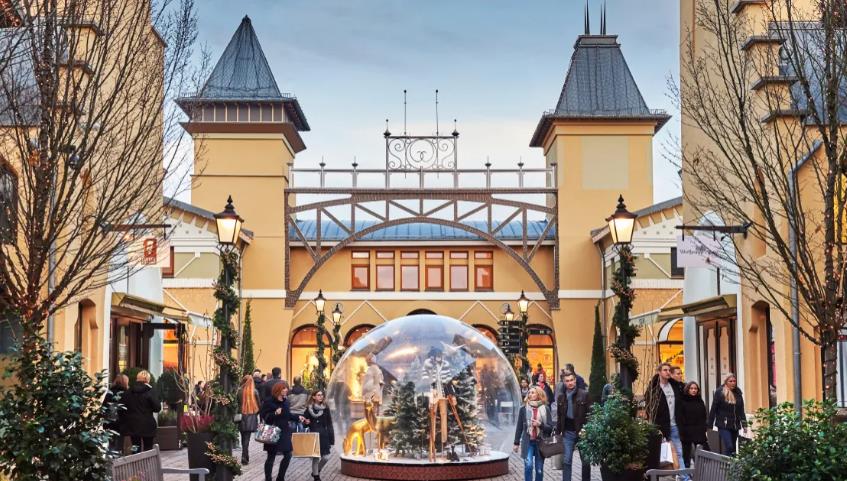
2025 Recommended Attractions in Page (Updated July)
57 posts
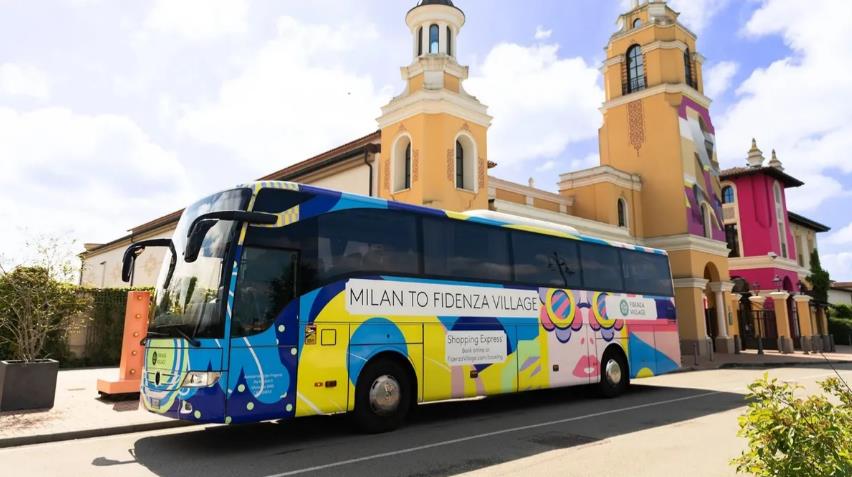
2025 Recommended Guides in Page (Updated July)
37 posts
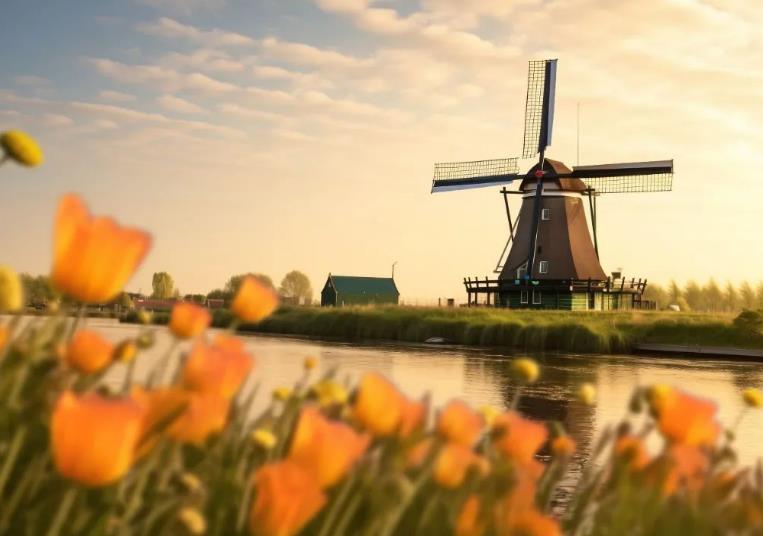
2025 Recommended Thorough Guides in Page (Updated July)
17 posts

Destinations related to Page
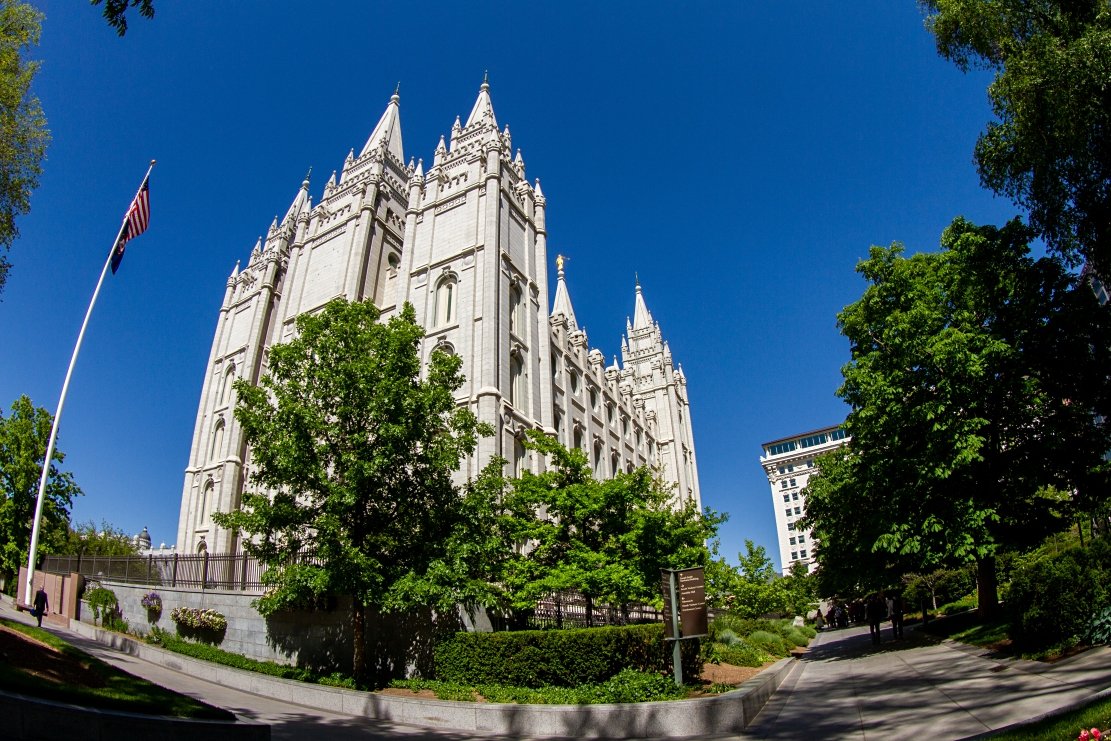
2025 Salt Lake City Travel Guide: Must-see attractions, popular food, hotels, transportation routes (updated in July)
117 posts
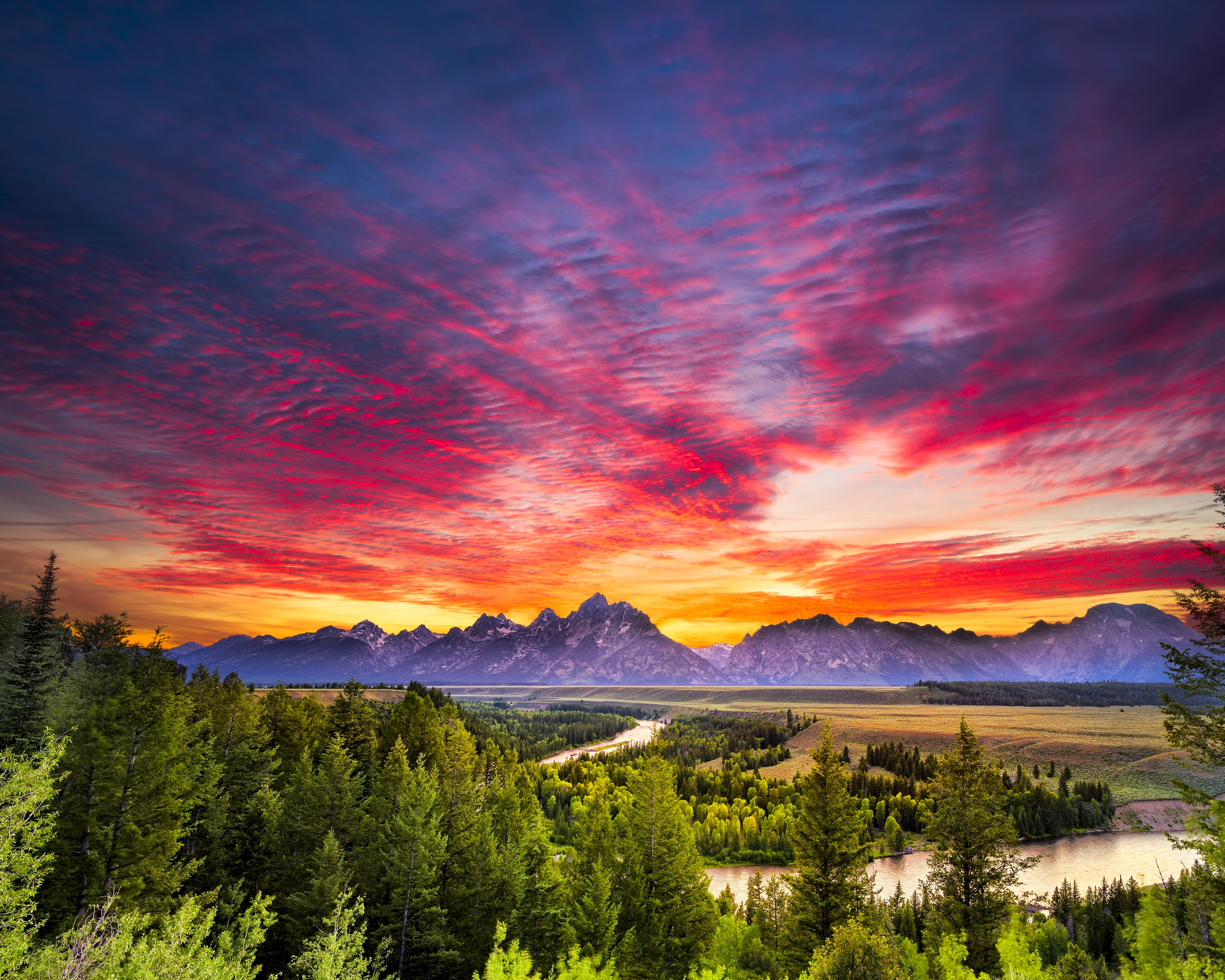
2025 Grand Teton National Park Travel Guide: Must-see attractions, popular food, hotels, transportation routes (updated in July)
19 posts
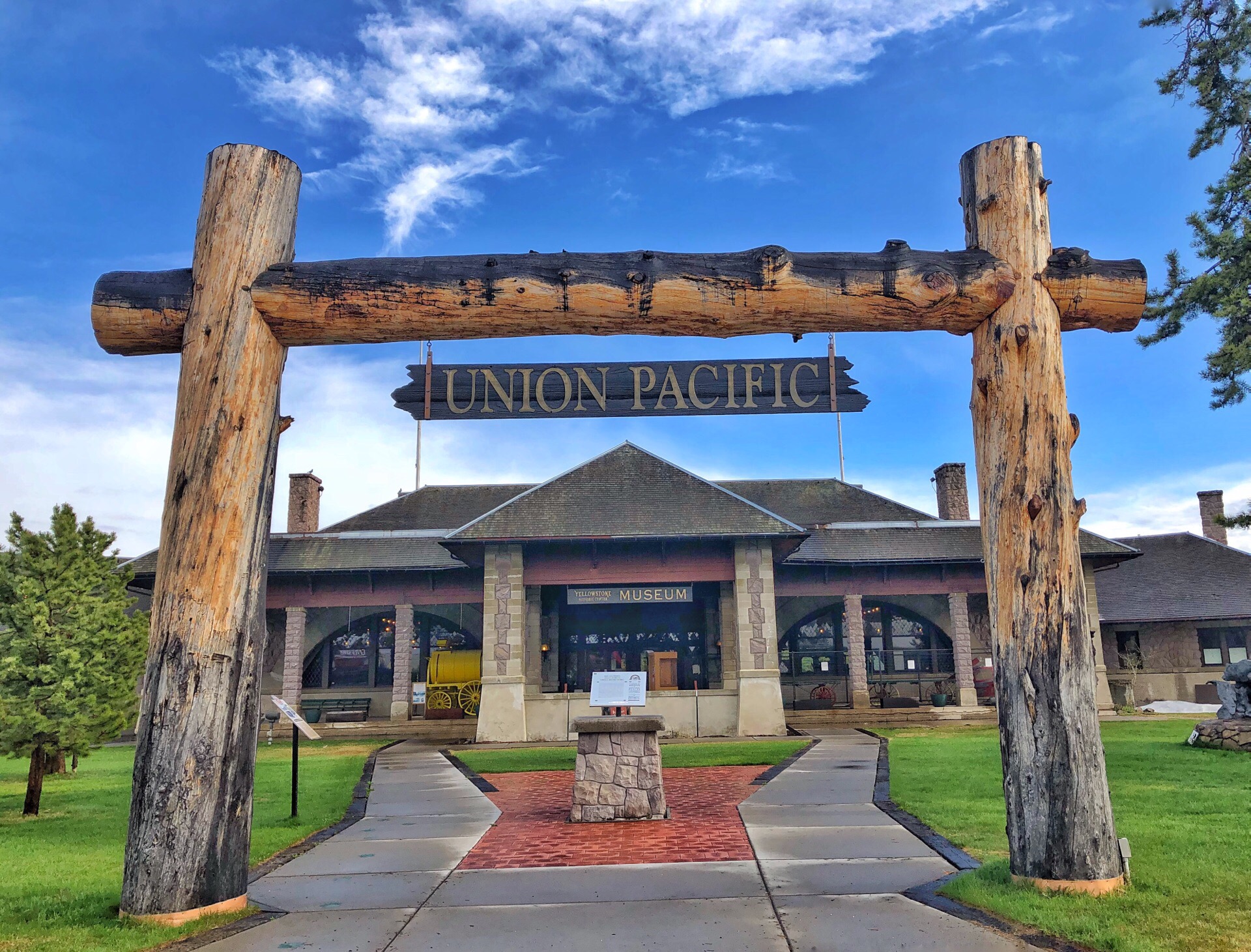
2025 West Yellowstone Travel Guide: Must-see attractions, popular food, hotels, transportation routes (updated in July)
11 posts
- 1
- 2
- 3
- 4
Post
More Recommendations
Popular Trip Moments
Page, Arizona: Red Rocks, Blue Waters & Bucket List Views | Seasonal Guide to Antelope Canyon, Arizona: A Symphony of Light and Shadow | 🚗 Southwest National Park Road Trip Tips: Stop by Lake Powell in Page, AZ 🌊🏜️ | 🚐✨ Page, Arizona – The Perfect Stopover on Your National Park Road Trip 🏞️🌄 | Glen Canyon Dam near Antelop Canyon | Lake Powell Resort | Page, Arizona: Desert Wonders Without the Price Tag | 8-day holiday: It’s the right time to travel to the United States. Super exciting ways to play are coming | A Super Popular 7-Day US Itinerary: Conquer America! | A 3-Day Trip to the US with Friends: Must-See Attractions | The Qingming Festival holiday is the perfect time for a 6-day trip to the US! | 18-day tour in the United States: a super detailed guide that you must save | Winter break with friends in the US: Enjoy a different journey | 18-day in-depth tour of the United States, super practical guide | place | McDonald's | 8-Day USA Tour: Classic Routes with a Twist | Lake Powell, Arizona: A Paradise on Earth | Page City - on the way | A quick guide to a 6-day tour of the United States. | Antelope Canyon: Nature’s Sculpted Masterpiece for Photographers | 🇺🇸USA Arizona Page | Antilope Canyon is really beautiful. | Boating on the artificial lake | 🇺🇸Start your tour by watching the sunrise at Glen Canyon Dam!🇺🇸 | 7 Must-Visit Bizarre Worlds on a Trip to the United States | Glen Canyon Dam in Page - a sight worth seeing! | Horseshoe Bend, a moment of awe at the great outdoors in the American West | Breath taking Horseshoe Bend | Amazing View @ Horseshoe Bend
Recommended Attractions at Popular Destinations
Attraction near Bangkok | Attraction near Manila | Attraction near Tokyo | Attraction near Taipei | Attraction near Hong Kong | Attraction near Seoul | Attraction near Kuala Lumpur | Attraction near Los Angeles | Attraction near Shanghai | Attraction near New York | Attraction near Shenzhen | Attraction near Osaka | Attraction near Singapore | Attraction near London | Attraction near Guangzhou | Attraction near San Francisco | Attraction near Beijing | Attraction near Macau | Attraction near Bali | Attraction near Jakarta | Attraction near Paris | Attraction near Ho Chi Minh City | Attraction near Istanbul | Attraction near Phuket | Attraction near Chicago | Attraction near Seattle | Attraction near Toronto | Attraction near Orlando | Attraction near Cebu | Attraction near Chiang Mai
Popular Restaurants in Page
State 48 Tavern | The Great Wall of China | Subway | El Tapatio | Jadi To´oh | Canyon King Pizzeria | Canyon Crepes Cafe | Big John's Texas BBQ | Strombolli’s Italian Restaurant & Pizzeria | Jack in the Box | McDonald's | Glen Canyon Steak House | Chill-N-Grill | Fiesta Mexicana | Pizza Hut | U-Swirl | Nemo's Fish & Chips | Dam Bar & Grille | Latitude 37 | Gone West Family Restaurant | Big Dipper | Little Caesars Pizza | Paco's Tacos | RD's Drive-In | Pepper's | Starlite Chinese & American | The Deli at Big Lake Trading Post | Mandarin Gourmet | Blue Bar & Wine | Blue Buddha Sushi Lounge
Popular Ranked Lists
Top 3 Best Things to Do in Fuding | Popular Must-Visit Restaurants in San Francisco | Top 10 Must-Visit Restaurants in Bad Ischl | Popular Must-Visit Restaurants in Melbourne | Popular Must-Visit Restaurants in Bangkok | Popular Luxury Hotels Near Port Macquarie | Popular Premium Hotels in Tehran Province | Top 3 Best Things to Do in Zhoukou | Popular Must-Visit Restaurants in Paris | Top 3 Best Things to Do in Chizhou | Popular Luxury Hotels Near Evros | Popular Must-Visit Restaurants in Chaozhou | Popular Premium Hotels Near Lancaster County | Popular Must-Visit Restaurants in Hangzhou | Popular Luxury Hotels Near Anatolikos Olimpos | Popular Premium Hotels in Wake County | Popular Must-Visit Restaurants in Tokyo | Top 11 Best Things to Do in Hechi | Popular Must-Visit Restaurants in Hong Kong | Top 3 Best Things to Do in Shengsi | Top 3 Best Things to Do in Panzhihua | Top 4 Best Things to Do in Yingkou | Popular Best Things to Do in Pingxiang | Top 3 Best Things to Do in Zaozhuang | Popular Luxury Hotels Near Fishers | Popular Must-Visit Restaurants in Bali | Popular Best Things to Do in Qinzhou | Popular Must-Visit Restaurants in Jeju | Top 6 Best Things to Do in Jincheng | Top 8 Best Things to Do in Jining
Payment Methods
Our Partners
Copyright © 2025 Trip.com Travel Singapore Pte. Ltd. All rights reserved
Site Operator: Trip.com Travel Singapore Pte. Ltd.
Site Operator: Trip.com Travel Singapore Pte. Ltd.